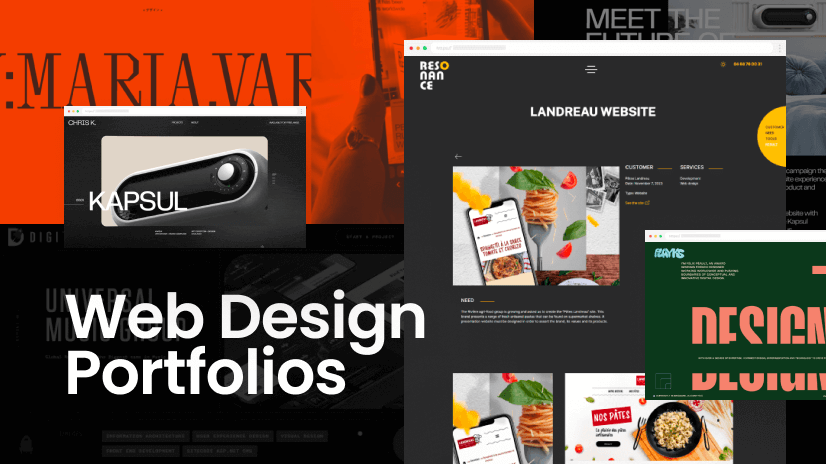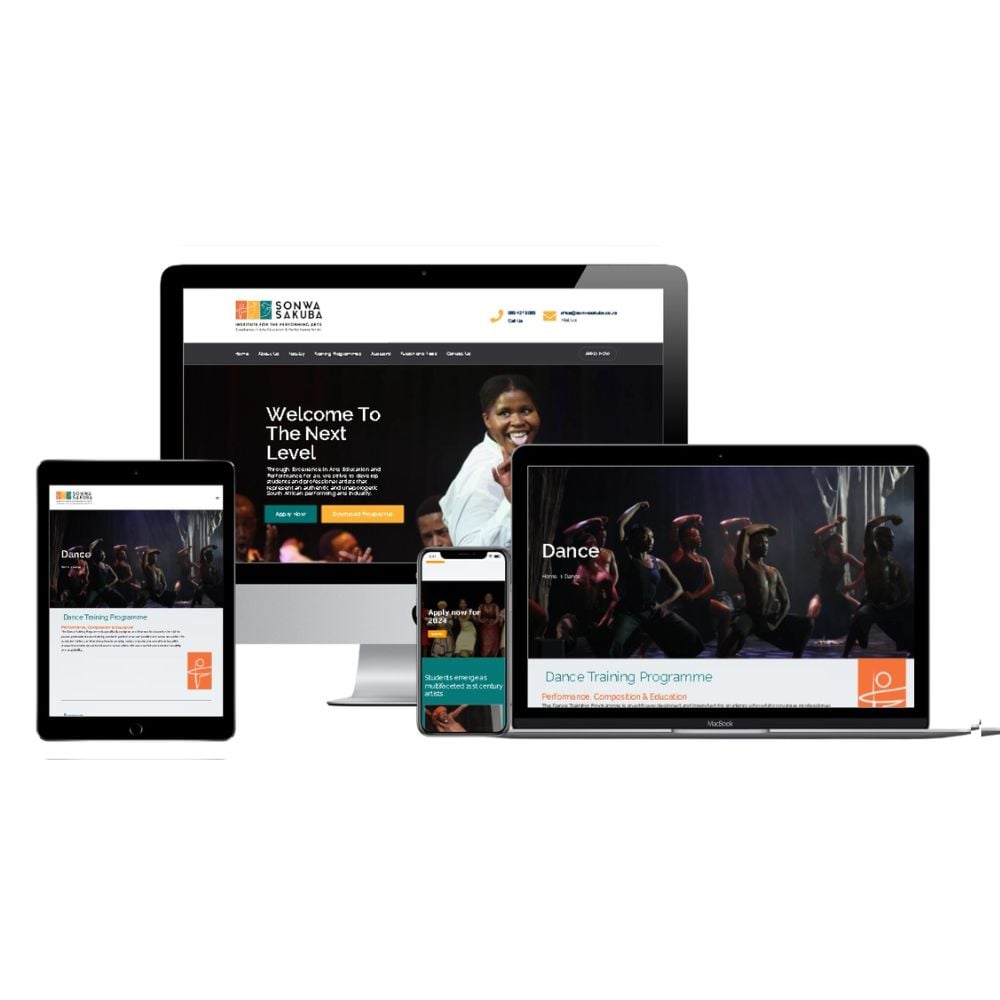Why Every Organization Demands a Solid Website Design for Online Exposure
Key Strategies for Implementing User-Centric Web Site Design to Boost Involvement
When taking into consideration the implementation of user-centric web site style, certain techniques are crucial in increasing engagement. Complete study into individual demands and choices forms the structure, guiding the production of customer personas to educate design choices. Instinctive navigating and responsive user interfaces are important, guaranteeing simplicity of access across all gadgets. At the same time, personalizing material boosts customer complete satisfaction, and robust availability functions broaden reach. These approaches jointly cultivate a more meaningful online experience. However exactly how do these aspects come with each other properly, and what sensible actions can be required to ensure their effective assimilation?
Understanding Individual Needs
Understanding customer needs is an essential action in the procedure of user-centric web site design. Methods such as surveys, interviews, and user testing can provide useful qualitative and measurable data about how customers interact with the web site.
Evaluating this information allows designers to produce thorough customer personalities that represent the various sections of the target market. These personalities help inform style decisions by highlighting particular individual goals and difficulties, leading the growth of attributes that address these needs efficiently. Comprehending the context in which individuals operate-- such as their atmosphere, gadget preferences, and time constraints-- can even more refine the design strategy.
Compassion plays an important role in this procedure, making it possible for developers to see the site from the user's viewpoint. By focusing on user needs, the style procedure comes to be a lot more focused, avoiding the incorporation of unnecessary components that can mess the individual experience. Inevitably, a deep understanding of user demands is important in crafting a site that is both meaningful and useful.
Designing Instinctive Navigation
Having actually established an extensive understanding of customer demands, the next action in user-centric website layout includes creating instinctive navigation. Reliable navigation is fundamental to individual contentment, influencing exactly how easily customers can find details and full jobs. To achieve user-friendly navigation, developers have to prioritize simplicity and clarity, ensuring that the navigation framework is consistent and logical throughout the website.
Organizing web content into a clear power structure is critical. Website Design. The use of acquainted tags and icons can assist customers effortlessly, minimizing cognitive lots and boosting the overall individual experience. A properly designed navigating bar need to be prominently put, enabling customers to identify their present place and conveniently discover other sections of the website
It is likewise vital to incorporate interactive elements such as breadcrumbs and search performances to help individuals in browsing complicated websites. These attributes offer added paths and improve the availability of web content, providing to various user preferences and behaviors.
Evaluating navigation with genuine users is important to determine possible discomfort points and guarantee functionality straightens with individual assumptions. Normal comments loops and iterative renovations can help keep an efficient navigation system that adjusts to evolving individual demands, eventually enhancing involvement and contentment.
Producing Receptive Interfaces
Invariably, producing responsive user interfaces is a crucial element of modern-day website design, guaranteeing that internet sites are easily accessible and functional across a multitude of tools and screen dimensions (Website Design). This adaptability is essential in a landscape where customers gain access to web content through smartphones, desktop computers, tablets, and laptop computers, each with varying positionings and resolutions. The key goal of responsive layout is to boost individual experience by keeping optimal readability and use, despite the tool used
To accomplish this, web developers use flexible grid layouts, liquid images, and CSS media questions. Versatile grids enable website elements to resize proportionally, while liquid images make sure visuals range suitably without shedding quality. Media questions play an important function by using various this content styles based on the gadget's attributes, such as elevation, width, and positioning, hence tailoring the layout to the user's screen.
Moreover, responsive interfaces contribute to improved seo (SEARCH ENGINE OPTIMIZATION) by offering a smooth customer experience, which subsequently can lower bounce prices and rise website involvement. In summary, embracing receptive style is not merely a technical consideration but an essential strategy for fostering a user-centric web setting that satisfies the requirements of a varied audience.

Personalizing Material Experience
Customizing content experience is an important part of user-centric internet site layout that entails customizing content to fulfill the one-of-a-kind choices and actions of individual customers. This strategy not just boosts customer fulfillment however likewise promotes deeper engagement, as site visitors are more probable to engage with content that resonates with their needs and interests. By leveraging information analytics and user comments, companies can recognize patterns and fads that notify the personalization of web material.
Incorporating customization methods can range from straightforward modifications, such as recommending items Web Site based on browsing background, to much more innovative methods like vibrant web content that adapts in real-time to an individual's interactions. Customized landing pages can considerably raise conversion rates by providing users with pertinent information and uses that straighten with their previous tasks and preferences.
In addition, utilizing fabricated intelligence and equipment knowing can additionally improve content customization by continuously discovering from customer actions and adapting to emerging patterns. This not only improves the user's trip but additionally develops brand name commitment, as consumers feel comprehended and valued. Eventually, individualizing the content experience is a necessary strategy for organizations aiming to create a more engaging and purposeful interaction with their audience.
Enhancing Accessibility Features
Enhancing ease of access functions is a basic aspect of user-centric site style, guaranteeing that electronic web content is useful by everyone, consisting of individuals with impairments. This strategy not just follows legal requirements such as the Americans with Disabilities Act (ADA) and the Internet Material Accessibility Guidelines (WCAG) but also significantly expands an internet site's audience reach. By incorporating attributes like keyboard navigation, display visitor compatibility, and alternative text for images, internet sites end up being a lot more comprehensive, providing a smooth experience for customers with visual, acoustic, or motor impairments.
Integrating responsive layout aspects is important, promoting accessibility on numerous gadgets and screen dimensions, thus fitting users with various preferences and demands. Moreover, contrast ratios and text size adjustments can boost readability for individuals visit this site with aesthetic challenges. Supplying succinct and clear material framework, such as headings and lists, help comprehension and navigating, specifically for users with cognitive handicaps.
Routine availability audits must be conducted to determine and fix prospective barriers, making sure ongoing compliance and functionality. By focusing on ease of access, services not just foster inclusivity however additionally improve total user involvement and contentment, eventually driving greater conversion prices and strengthening brand commitment.

Verdict
Including user-centric style methods dramatically improves website involvement by focusing on the needs and preferences of individuals. Detailed research study helps with the development of customer characters, directing targeted layout decisions. User-friendly navigating and responsive interfaces enhance usability and ease of access throughout gadgets. Personalizing web content based upon customer habits boosts complete satisfaction, while robust availability functions expand audience reach. Collectively, these strategies produce a purposeful online experience, cultivating much deeper engagement and communication with the website.
Extensive study right into individual needs and preferences creates the foundation, directing the creation of customer personas to educate style options. Techniques such as surveys, interviews, and individual testing can offer valuable qualitative and quantitative data concerning just how individuals interact with the internet site.
By focusing on individual requirements, the layout process becomes more concentrated, preventing the incorporation of unneeded elements that might mess the individual experience. Reliable navigation is fundamental to individual contentment, influencing how conveniently users can discover information and total tasks. The usage of familiar tags and icons can assist individuals effortlessly, lowering cognitive tons and boosting the total individual experience.